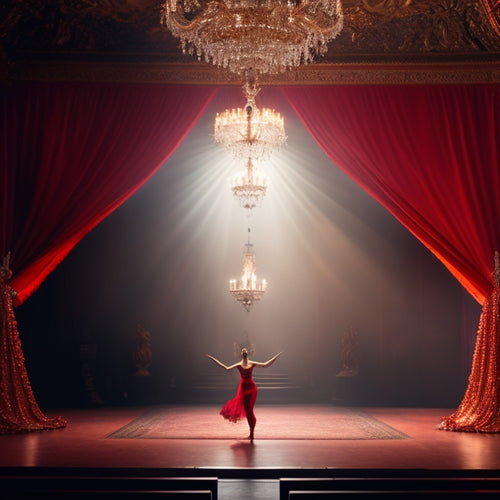10 Top Strategies for Flexible and Comprehensive Dancewear Design
Share
10 Top Strategies for Flexible and Comprehensive Dancewear Design
Dancewear is more than just attire; it's an extension of a dancer's form, influencing both performance and expression. The design of dancewear requires a meticulous balance between aesthetics, functionality, and flexibility. In an era where dance transcends traditional boundaries, incorporating various styles and movements, dancewear too must evolve. Here are ten strategies for designing dancewear that's not only comprehensive but also flexible and enduring.
1. Prioritize Comfort and Mobility
At the heart of any dancewear design should be the comfort and mobility of the dancer. Utilizing stretchable and breathable fabrics ensures that the attire accommodates every movement without restriction, allowing dancers to perform at their best.
2. Consider the Dance Style
Different dance styles have unique needs and traditions. A ballet leotard differs significantly from hip-hop dance attire. Designers must consider the specific requirements of each dance style, including footwear, to create appropriate and functional dancewear.
3. Embrace Technological Fabrics
Innovative fabrics can significantly enhance the functionality of dancewear. Materials with moisture-wicking properties, for example, can help keep dancers cool and comfortable. Similarly, incorporating antimicrobial fabrics can help maintain hygiene, an essential aspect for garments worn during intensive physical activity.
4. Ensure Durability
Dance can be rigorous, demanding durability from dancewear. Choosing high-quality materials and construction techniques can ensure that dancewear withstands the test of time and frequent use, offering better value and reliability for dancers.
5. Flexibility for Layering
Dancers often layer clothing for rehearsals, warm-ups, and performances. Designs that consider layering—from loose, easy-to-remove pieces to items that can comfortably be worn together—offer versatility and practicality.
6. Customization Options
Offering customization options can make dancewear more appealing. Whether it's selecting fabric colors, incorporating adjustable features, or even tailoring for specific body types, personalized dancewear ensures that every dancer feels confident and unique.
7. Gender Inclusivity
Modern dancewear designs should cater to all genders, moving beyond traditional gender-specific attire. This approach not only makes dance more inclusive but also allows for a broader range of creative expression through dancewear.
8. Aesthetic Versatility
While functionality is crucial, aesthetic appeal cannot be overlooked. Dance is a form of art, and the visual aspect of dancewear contributes to the overall performance. Designs that balance aesthetic appeal with practicality can enhance the dancer's presence on stage.
9. Environmental Sustainability
The choice of materials and production processes has a significant impact on the environment. Opting for sustainable practices, from sourcing eco-friendly fabrics to minimizing waste, reflects a commitment to environmental responsibility within the dance community.
10. Incorporate Feedback from Dancers
Lastly, involving dancers in the design process can provide invaluable insights. Their firsthand experience and feedback can guide improvements in comfort, functionality, and style, ensuring that the final product truly meets the needs of its intended users.
Designing dancewear that is both flexible and comprehensive requires a thoughtful approach that considers the needs of dancers, the demands of different dance styles, and the evolving landscape of dance as an art form. By following these strategies, designers can create attire that not only serves its functional purpose but also enhances the beauty and expression of dance.
Related Posts
-

Learn Dance Makeup Artistry Online: A Step-by-Step Guide
You're about to begin an exciting journey to master the art of dance makeup online! First, you'll need to select the ...
-

Dance Spectacular With Limited Seating Offer
Experience the magic of dance with Santa Barbara Festival Ballet's 'Growing Up With Dance' spectacular, featuring bre...
-

Unleashing Business Success Through Dance E-Learning
Dance e-learning is revolutionizing business success by making high-quality training accessible to aspiring dancers w...


